Why is it important to improve internal communication?
People are an organisation’s biggest asset – meaning they need to focus on getting the best from their employees. Internal communication (IC) is central to this, empowering staff with the information they need to work effectively, connecting them with corporate strategy and objectives and strengthening engagement at work.
How can we improve internal communication programmes
Running successful internal communication programmes is therefore vital for all types of organisation. This requires a strategic approach that is constantly monitored, measured, and improved.
Day by day we at Tivian help companies to improve the employee experience and also to optimise internal communication sustainably and continuously. Based on our experience, we have identified 15 important best practices:
1. Create an overall plan, linked to business objectives
It is vital that internal communication is handled in a strategic, planned way, rather than on an ad hoc basis. It should be closely aligned with corporate goals and objectives and support their achievement. For example, if becoming more customer-centric is a key objective, then internal communication must reflect this, both by reinforcing the importance of customers in every communication and ensuring that employees have easy access to the right information to deliver an excellent customer experience.
Are you still missing the right strategy for your internal communication? Find out more about how to develop an internal communication strategy.
2. Stay focused
Once you have a strategy and plan, it is vital to remain focused on it. Be prepared to say no if managers come to you with ideas for new internal communication campaigns if they don’t align with your calendar and messages. Otherwise, you will lose focus and consistency. However, bear in mind that you cannot control every communication made across the organisation. For example, let departments and offices launch their own initiatives if they are relevant to their own people, but do not fit with the wider IC strategy.
3. Be inclusive and involve everyone
For internal communication programmes to succeed they need the backing of the entire organisation. Start by getting senior management to sign off and champion your plan, demonstrating that it is important to company goals. Improve internal communication by involving different departments and offices by listening to their needs and ensuring that your programme reflects their requirements – they will be vital to its adoption so must be on side. Build strong, lasting relationships with these stakeholders to drive long-term success.
4. Listen to employees with an open mind
Above all, continually focus on employees and their needs. Essentially, they are the customer for the programme, so take the time to find out what they are interested in, how they want to access IC content and the tone they expect. Collecting and acting on their feedback will start two way conversations that make it more likely that programmes will deliver results and generate ways to improve internal communication.
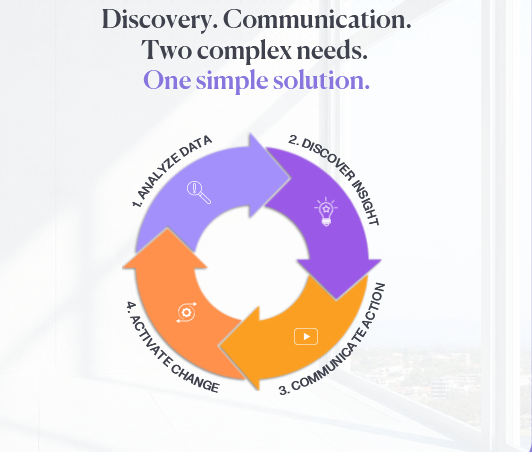
Communicate XI and Discover XI help you
While many solutions focus mainly on feedback or communication tools, Tivian offers both. For you, this means that you can not only gain insights, but also communicate measures. We call it Experience Intelligence, or XI for short.
5. Put employees at the centre
The best way to drive engagement is to involve employees across your IC programme. Use your communications to celebrate and highlight employee achievements – people love reading about their peers and are motivated by the success they have had. This will also encourage people to share information moving forward. As well as building relationships with managers also create local or departmental IC champions who can act as points of contact for internal communication queries and ensure you have got internal influencers on board. Bear in mind you need to influence the entire company, so make sure your plan and tactics reach those that may not have work access to PCs or email accounts.
6. Use clear, consistent messaging
Nothing is more likely to confuse employees than receiving communications in a mix of styles and with conflicting messaging. Be consistent across every communication – develop a strong brand voice that fits your needs and make sure that everyone adopts it through a clear internal messaging guide. Ensure every communication has a purpose and supports your overall messaging.
7. Make your content appealing and engaging
When it comes to content think like a marketer – use storytelling to engage your audience and get your message across. Keep communications clear and concise, but don’t be afraid to have fun and be light-hearted when relevant. Use a variety of different content types – email, newsletters, infographics, videos, and podcasts for example. As well as being visual, make communications interactive through quizzes, competitions, polls, surveys and Q&A sessions and webinars.
Little effort, lots of impact: design your content easily with Communicate XI
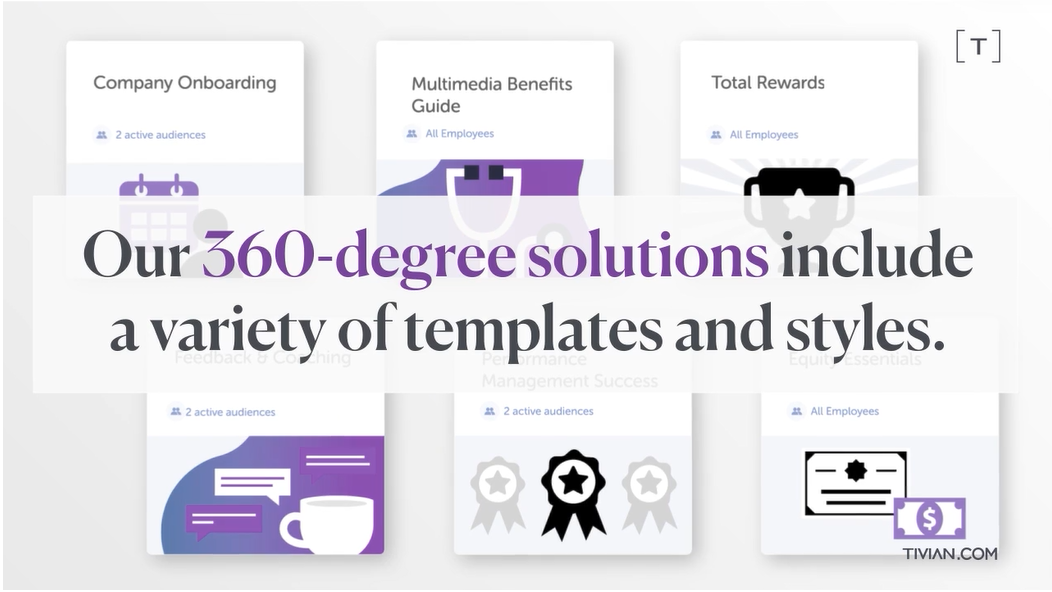
8. Personalise your communications to meet different needs
Today’s multigenerational workforce contains employees with a wide range of experiences who want different types of information through different channels. Ensure that you understand and meet their needs by segmenting your audiences – not forgetting to cover multiple languages if you operate internationally. Also cater for the growing number of remote or hybrid workers, for example, by giving them the option to connect online to events. Use data to personalise your communications even more, down to an individual level, using employee responses to build a detailed picture of people’s requirements.
Address your employees directly and use the channel that is best for them. Communicate XI will help you with this.
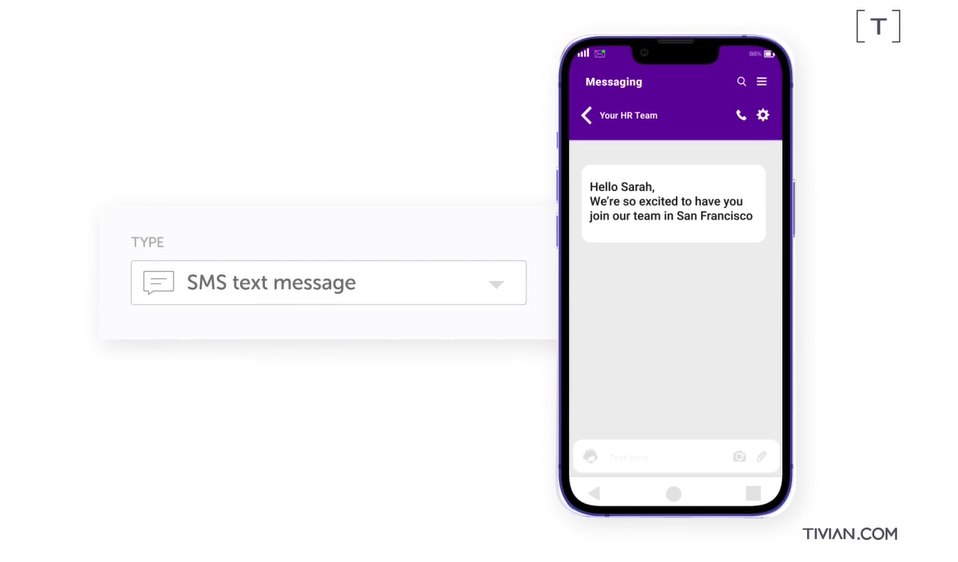
9. Use a smart mix of channels
There are multiple ways to reach employees, such as via email, face-to-face meetings, webinars, newsletters, and intranets. Don’t rely on one channel alone – use a mixture of them dependent on the message, its urgency, and the action you want people to take. For example, intranets are well-suited to sharing static documents (such as policies and holiday forms), while email or instant messaging reaches employees quickly if the contents are urgent. When using digital channels remember that the majority of employees will be accessing information on their smartphone, so use responsive design to make everything mobile-friendly.
10. Keep a regular cadence of activities
When you start an internal communication programme there’s always a lot to say. Resist the temptation to immediately overload employees with messages – set out a clear calendar that spaces out communications. This helps manage and plan your workload too. Stick to deadlines – if employees have been told that they’ll receive a monthly newsletter, ensure you don’t disappoint them. However, don’t be afraid to repeat messages in new ways – people may miss the first email they are sent with important information, so follow-up to get the message across.
With Communicate XI, you manage each individual campaign and stick to your schedule.
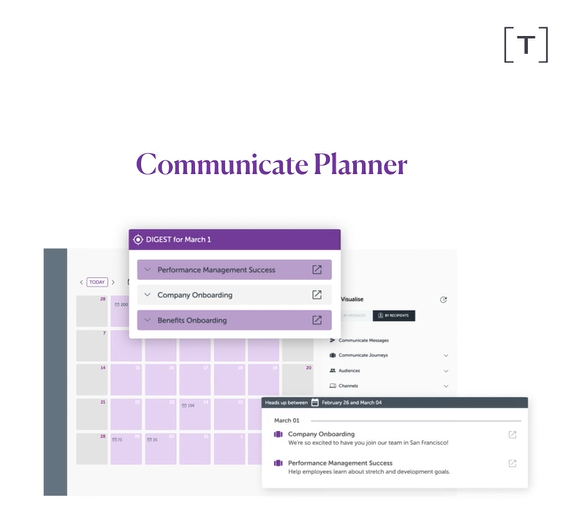
11. Go beyond digital channels
Given the ubiquity of email and other digital channels, it is tempting to solely focus IC strategies on them. However, there are a wide range of IC tools and channels available. it is important not to neglect physical channels (such as posters in the workplace) or even the importance of office design to creating social interactions through “watercooler moments”. While these are less easy to monitor, they can all contribute to getting your messages across to employees.
12. Increase efficiency with technology
IC teams have a lot to do – and have to meet the ever-increasing expectations of employees and stakeholders. Delivering personalised, relevant IC programmes at scale can be daunting, so invest in technology and tools that can help you focus on messaging and content, rather than administration.
Tivian’s COMMUNICATE XI is such a smart software that helps IC teams to plan, manage, measure, and scale their programmes, combining dynamic content, full reporting, and data-driven analysis to show where improvements can be made.
13. Test everything
Maximise the chances of successful communication by testing everything before you hit send to the entire organisation. Beta test messages and campaigns with small groups, such as your IC champions, to ensure that they resonate and deliver the impact that you are looking for. This also provides the chance to bring in a diverse range of perspectives to ensure that not only are messages easy to understand, but that they resonate positively with all audiences.
14. Be ready for negativity
IC isn’t just about communicating good news. It is a key part of change management or crisis communications, which means that your messages may not be what employees want to hear. Use empathy to understand potential negativity, and craft your communications to be transparent and clear to avoid any ambiguity. Remember that you are the messenger – don’t take criticism personally.
15. Constantly measure and improve
Underlying all internal communication improvements is a commitment to measure the impact of your activities and use feedback to enhance everything you do. That means setting clear metrics (such as around open rates, click throughs or engagement) and analysing the resulting data to identify where changes are needed. Look at which types of content are performing best and see if you can do more of them for example. Also, go into detail. A campaign may be performing well overall, but is it resonating equally strongly with different segments or offices?
Tivian’s Communicate XI makes it easier to measure success by showing you all the important KPIs at a glance.
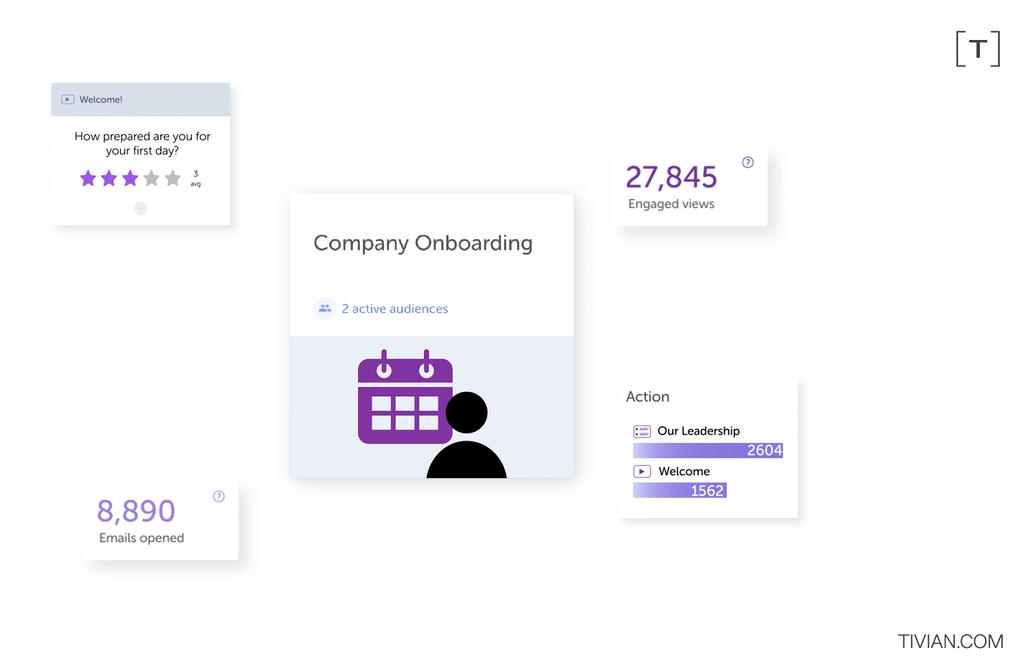
Every organisation is different – however businesses of all sizes and sectors can use some or all of these examples to improve their internal communication and increase effectiveness and drive greater engagement.
Use Communicate XI to improve your internal communications
Our tool makes it easy to develop dynamic, personalized content, communicate your messages at the right time, and effectively manage and improve your program.

